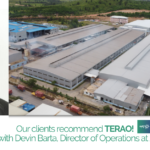Energy reduction is a critical issue the world needs to englobe today as we strive to reduce our carbon footprint and create a sustainable future. Commissioning, often written as Cx, is one of the tools that help building owners reduce their energy consumption.
In this article, we explore the importance of commissioning to optimize building operations.
What is commissioning?
Commissioning consists of verifying and documenting that all the systems and equipment in a building have been installed, tested, and are functioning according to the design specifications and owner’s requirements. A wide range of systems and equipment can be commissioned such as HVAC systems, electrical systems, plumbing systems, automation and renewable energy production systems.

Figure: relationships between commissioning and energy efficiency measures
Commissioning is the result of a collaborative effort involving owners, design professionals, construction managers, and commissioning agents to achieve optimal results. The commissioning process typically involves several steps as below:
- Pre-Design Phase: This stage consists in defining the Owner’s project requirement, scope, identification of the commissioning team, and developing a commissioning plan.
- Design Phase: During this stage, the commissioning team reviews the design documents to ensure that building systems meet the design requirements and are compliant with codes and also verifies that the design is suitable for the intended use of the building,
- Installation and Testing: In this stage, the commissioning team oversees the installation and testing of the building systems. The Cx team including the General contractor and/or MEP contractor performs functional testing of the systems,
- Post-Occupancy phase: In this stage, the commissioning team verifies that system manuals are complete and ready to use. The team also trains the building operations staff on the proper operation and maintenance of the building systems,
- Ongoing Commissioning: This stage involves ongoing monitoring and maintenance of the building systems to ensure they continue to perform as intended. The commissioning team may perform periodic re-commissioning activities to verify the performance of the building systems over time.
The 4 different types of Commissioning: In practice, we can differentiate 4 types of commissioning, all of which aim to optimize the operation of a building. The main difference when commissioning is as below:
- Initial Commissioning (I-Cx) is a systematic process applied to the production of a new building,
- Retro-Commissioning (Retro-Cx) is the first time commissioning implemented in an existing building in which a documented commissioning process was not previously implemented,
- Re-Commissioning (Re-Cx) is a commissioning process implemented after I-Cx or Retro-Cx when the owner wants to verify, improve and document the performance of building systems,
- On-going commissioning (On-Going Cx) is a commissioning process conducted continually to maintain, improve and optimize the performance of a building.

Figure: The 4 different types of commissioning
The benefits of Commissioning:
The benefits of commissioning include many aspects such as improved building performance, reduced energy consumption, improved indoor air quality, increased comfort for building occupants, and reduced maintenance costs.

Some examples of highlighted defects during verification by commissioning
For new construction, the verification of the good installation of the building systems (envelope, HVAC systems, BMS, etc.) and their good operation before the building has been handed over are key, time should be allowed to test and commission the key systems.
This would avoid bad surprises after handover, when the contractors are not anymore onsite or have no more legal bind with the project anymore.
The economic impact of Commissioning on operation cost:
Commissioning, often perceived as an additional burden on projects, actually turns out to be a significant source of savings. By making a reasoned choice from a technical point of view and by optimizing the operation of the systems installed, a commissioning mission allows energy savings, but also financial savings that are higher than the cost of the Cx mission.

Energy savings through Retro-Commissioning and Monitored based commissioning
Written by Thomas Krysinski
Thomas Krysinski has just passed the CBCP accreditation (Certified Building Commissioning Professional) from the AEE. He is accredited to perform Commissioning missions.
Explore more:
- Case studies in Energy Efficiencies
- Chillers and Energy Efficiency
- Aeronautic industry : cold-rack energy efficiency case study
- Clearn room energy efficiency – Erlab testimony
If you need Commissioning services or would like more details on this service and hear more about some insightful returns on the experience we have around commissioning missions, please do not hesitate to contact our Business Development Manager at glemoinescelles@teraoasia.com. We would be glad to help you with Commissioning missions.


![[Expertise] How to conduct an energy audit to identify areas of energy waste in business](https://teraoasia.com/wp-content/uploads/2024/06/Expertise-1-150x150.jpg)

Leave A Comment